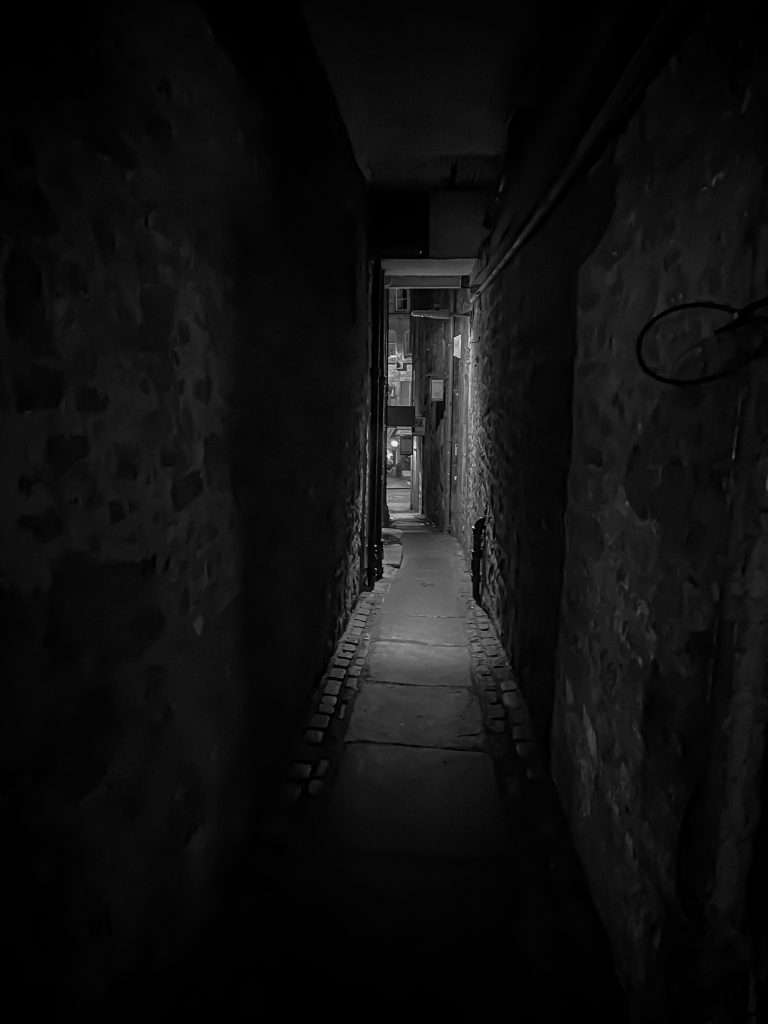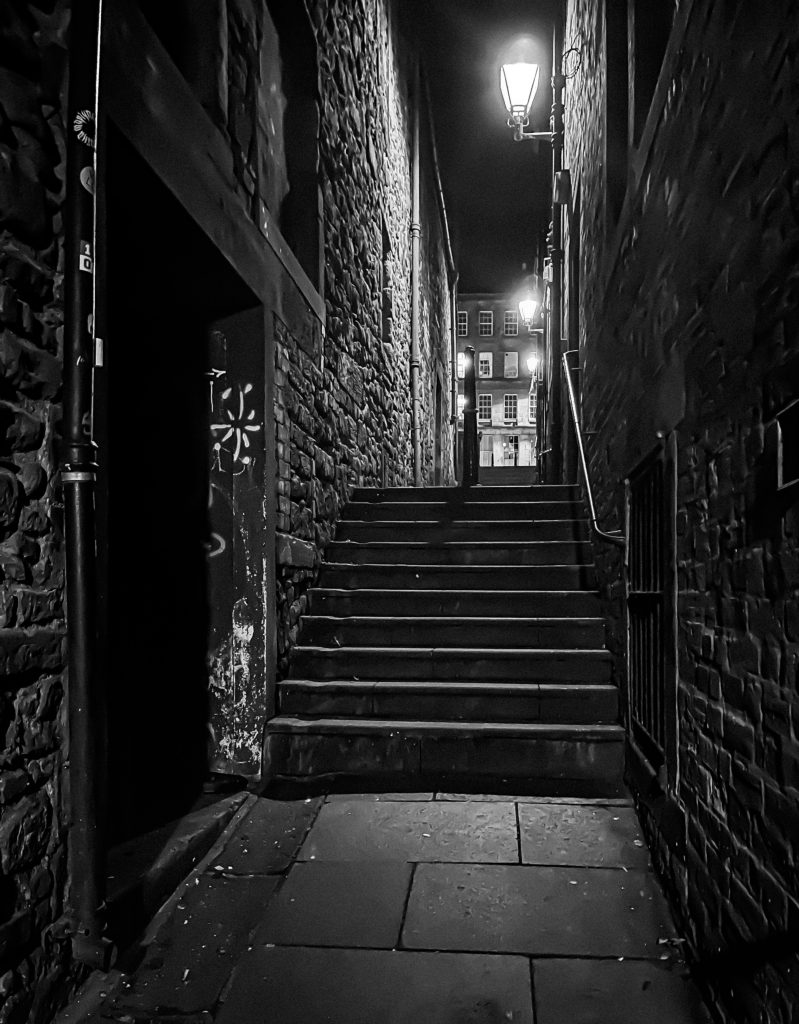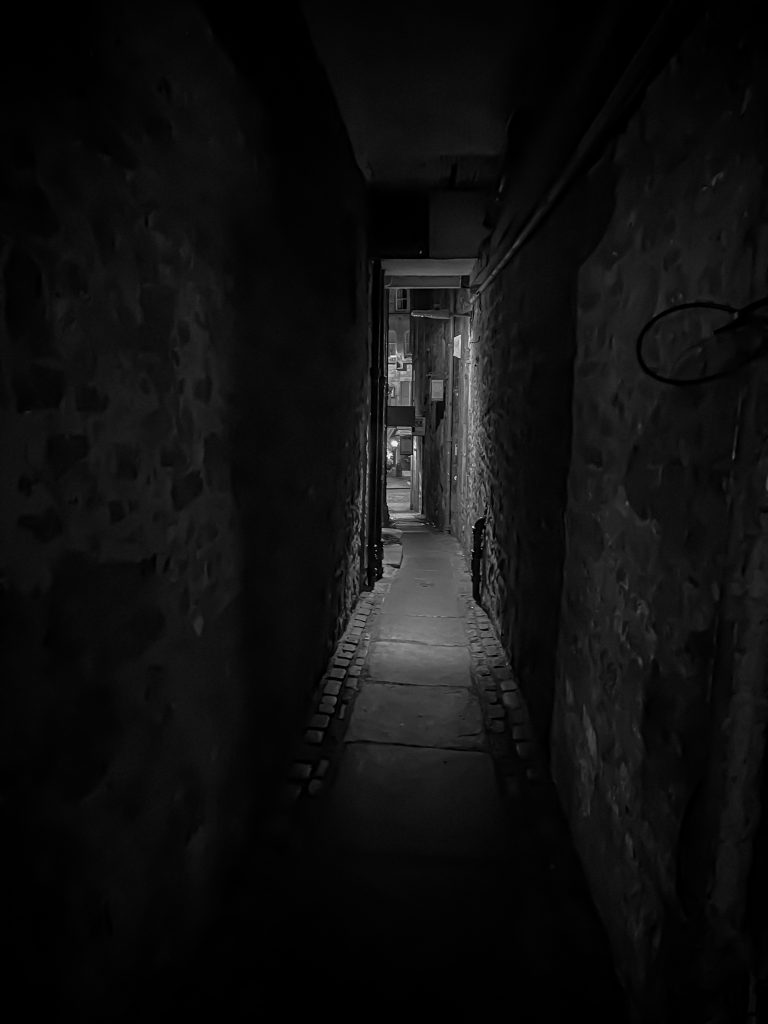
The Old Town of Edinburgh is a place where history feels alive, not only through its towering medieval architecture but also in its narrow alleys known as closes. These passageways off the famous Royal Mile twist and turn through the city like veins, offering more than just a shortcut from one street to another. They are steeped in history, folklore, and ghostly tales that could send a chill down your spine. As the crisp air of October settles in, these hidden corridors come alive with the eerie ambiance of the season—making them the perfect place for a spooky stroll.

Perhaps the most famous—and certainly the most haunted—of all the closes is Mary King’s Close. This underground labyrinth has been a subject of ghost stories for centuries. Once a bustling street, it was sealed off and abandoned during the outbreak of the plague in the 17th century, leaving its residents to fend for themselves.
Legend has it that the souls of those who perished in the close never left. Ghost tours through Mary King’s Close often speak of the spirit of a young girl named Annie, who is said to roam the narrow corridors, searching for her lost doll. Visitors have reported feeling cold spots, hearing disembodied whispers, and even seeing apparitions. Annie’s room has become a sort of shrine, with people leaving dolls and trinkets in the hopes of comforting the lonely spirit. The lingering plague and tragic abandonment lend an unsettling heaviness to the air, making it feel as though the past is still very much present beneath the cobbled streets.

Just a short walk from St. Giles’ Cathedral, Advocates Close is known for its breathtaking views of the New Town and the Firth of Forth. However, its past is far from picturesque. Named after the many lawyers (or “advocates”) who lived there, this close has its own share of spectral sightings.
One tale that persists is that of a forlorn lawyer who is said to have thrown himself down the steps after losing a case that ruined his career. His ghost is often seen late at night, still wearing his wig and robes, ascending and descending the steep stairway, forever trapped in a loop of despair. The close, though charming by day, takes on a more sinister tone as the sun sets and the narrow alley fills with shadows.

With a name like Fleshmarket Close, it’s no surprise that this particular passage holds some grisly secrets. The name refers to the nearby meat market, but the close has also been associated with darker activities. In the 19th century, body snatchers known as resurrectionists roamed these streets, digging up freshly buried corpses to sell to the medical schools of Edinburgh. Fleshmarket Close is said to have been a favorite haunt of these ghastly criminals, who prowled the alleyways under the cover of night, carrying their grisly cargo.
It’s not uncommon for those walking through Fleshmarket Close to feel an icy chill or a sudden feeling of dread, as if they’re being watched. Some claim to have seen shadowy figures moving in the corners of their vision, only to disappear when they turn to look. The ghosts of stolen corpses, perhaps, or the spirits of the men who profited from their sale? No one knows for sure, but the atmosphere is enough to make your heart race.

Brodie’s Close is named after one of Edinburgh’s most infamous characters, Deacon William Brodie. By day, Brodie was a respectable cabinetmaker and city councilor, but by night, he led a secret life as a burglar. His double life eventually caught up with him, leading to his execution by hanging—a gallows he himself had designed.

The close that bears his name is said to be haunted by Brodie’s restless spirit, doomed to wander the streets of the city he betrayed. Some say they’ve seen his shadow lurking in the narrow alleyways, while others have heard the faint clinking of coins and keys—a nod to his criminal past. Brodie’s life served as the inspiration for Robert Louis Stevenson’s Dr. Jekyll and Mr. Hyde, a fitting tale of duality and the darkness that can hide behind a mask of respectability.

Many of Edinburgh’s closes have a reputation for being haunted, and it’s no surprise given the city’s bloody history. The Royal Mile itself, with its narrow passageways and centuries-old buildings, feels like a place where the past still lingers. As Halloween approaches, the sense of unease in these dark alleys only grows stronger. Footsteps echo off the stone walls, and shadows seem to move of their own accord. Whether you’re a believer in the paranormal or not, the atmosphere of the closes is enough to give anyone pause.
Take a walk down Lady Stair’s Close, where a headless drummer is said to march at night, his rhythmic beats heard but his body unseen. Or venture into Bakehouse Close, where the ghost of a baker, long dead, has been seen tending to an oven that no longer exists. These stories, passed down through generations, add to the eerie mystique of the Royal Mile’s hidden alleys.

Walking through the closes of Edinburgh is like stepping back in time. Their histories are rich, their walls whispering stories of plague, crime, and tragedy. Whether you’re a skeptic or a believer, there’s no denying that these narrow passageways hold a unique power. As the cold wind blows through the city and the days grow shorter, the spirits of Edinburgh’s past seem to come alive, waiting just beyond the shadows. If you dare to wander the closes this Halloween, be prepared—because you never know what you might find lurking around the next corner.
